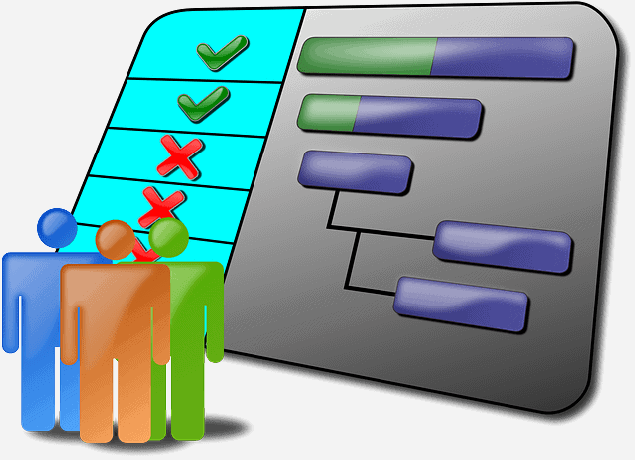Payback It is a word commonly used in the business world, although many people have doubts about its meaning.
This method of project evaluation, mainly considers the time it takes in a certain project the recovery of initial investment.
Advertisements
Every profitable project has the need to recover the investment, the time invested in this recovery is very important, the level of cost effectiveness of the same and the risk involved in carrying it out. The shorter the recovery period, the less risk the project will have. To know this period, it is done by calculating the Payback.
In this article you will find:
What is the payback?
It is a foreignness that means return. It consists of an indicator used to calculate the return time of an investment within the company, be it a project or business.
Advertisements
In technical words, the
Through this calculation, companies and business managers have an estimate of the time it will take recover your initial investment, therefore you will know if it is profitable or not to carry out said project or negotiation.
Advertisements
It should be taken into account that the result depends in a certain way on the type of business and the value of the investment itself.

Advertisements
How to calculate your payback?
To perform this calculation in a simple way, the following formula is available:
- Payback = Initial investment / cash flow
This applies to cases where the cash flows are the same during the life of the investment.
Advertisements
It is quite simple, although it is essential to take care of the calculation of the variables, it is especially important to properly plan the cash flow.
It is worth noting that it is known as simple payback.
In cases where the cash flow varies in the different periods of the investment, it is necessary to subtract them from the initial investment until the investment is fully recovered. The following formula applies:
- Payback = Previous period + initial investment - variable cash flow / Final cash flow
- Variable cash flow = the value of the sum of cash flows up to the previous period
- Final cash flow = the total value of the cash flow in the year of recovery of the investment.
It is the operation known as discounted payback.
Considerations in the calculation
- It is important to include all costs that are related to the investment. Among these, equipment costs, administrative expenses, officials and related operations.
- By means of the sample of results, the average of the cash flow is obtained, considering a certain period, for example, 12 months.
- Performing the monthly average cash flow calculation offers the advantage of simplifying the accounts and this one value will be used to divide the initial investment amount. For this, an accumulated cash flow is prepared, adding the different monthly cash flows of its projection.
- New projects can present negative results at the beginning, after a while the positive results accumulate and turn the final value into a positive result. At that time the return period.
- The payback is related to the following indicators:
- Return on Investment (ROI): Percentage of return on initial investment.
- Present Liquid Value (NPV): Value that is accumulated from the cash flow, which is necessary to make an exact calculation of the return.
- Internal Rate of Return (IRR): Interest rate when the NPV turns to zero.
Calculation example
A company makes an investment of 80,000 euros and the average monthly cash flow is averaging 3,000 euros
Payback = 80,000 / 3,000 = 26.7
In other words, the return on investment will be approximately 27 months.
Payback types
Simple:
It is that return on investment that is carried out quickly and simply, to measure the level of risk of an investment.
However, this calculation has limitations, since it does not consider (devaluations) the value of money over time, nor does it take into account the cash flows after the period of payback, nor the capital of the company.
These limitations make it, for many specialists, an incorrect method from the financial mathematical point of view.
Discounted:
It includes the concept of an annual discount rate. It is a dynamic method used in the evaluation of investments, it determines the moment of recovery of an investment, taking into account the effects that the passage of time brings about money.
This is a criterion of liquidity. It is carried out subtracting the amount of the initial investment, little by little the cash flows, which will be discounted until recovering the total initial investment, that is, it represents the return time considering the moment in which each flow of box.
It also has drawbacks, such as, for example, it does not take into account cash flows after the investment is recovered.
Advantages when calculating the payback
- It is carried out with a very simple, simple and easy-to-apply formula.
- Provides a general idea of the status and level of liquidity of a business or project.
- It can be used to measure the degree of risk involved in executing or arranging a business. Therefore, companies consider it useful in high-risk projects and in short-term projects.
- It is a resource that provides security especially in times of crisis and financial and economic instability.
Although this value allows to amortize certain investment risks related to the liquidity and profitability of the business, it can present failures such as the following:
- It is not very effective in assessing the risk of less liquid projects.
- It is a value concerning the course of time in which the liquidity of an investment recovers. It is not directly associated with the cost effectiveness
- It does not contemplate any profit or loss after the business has recovered the initial investment.
- Does not consider (the inflation) long-term purchasing power differentiation.


